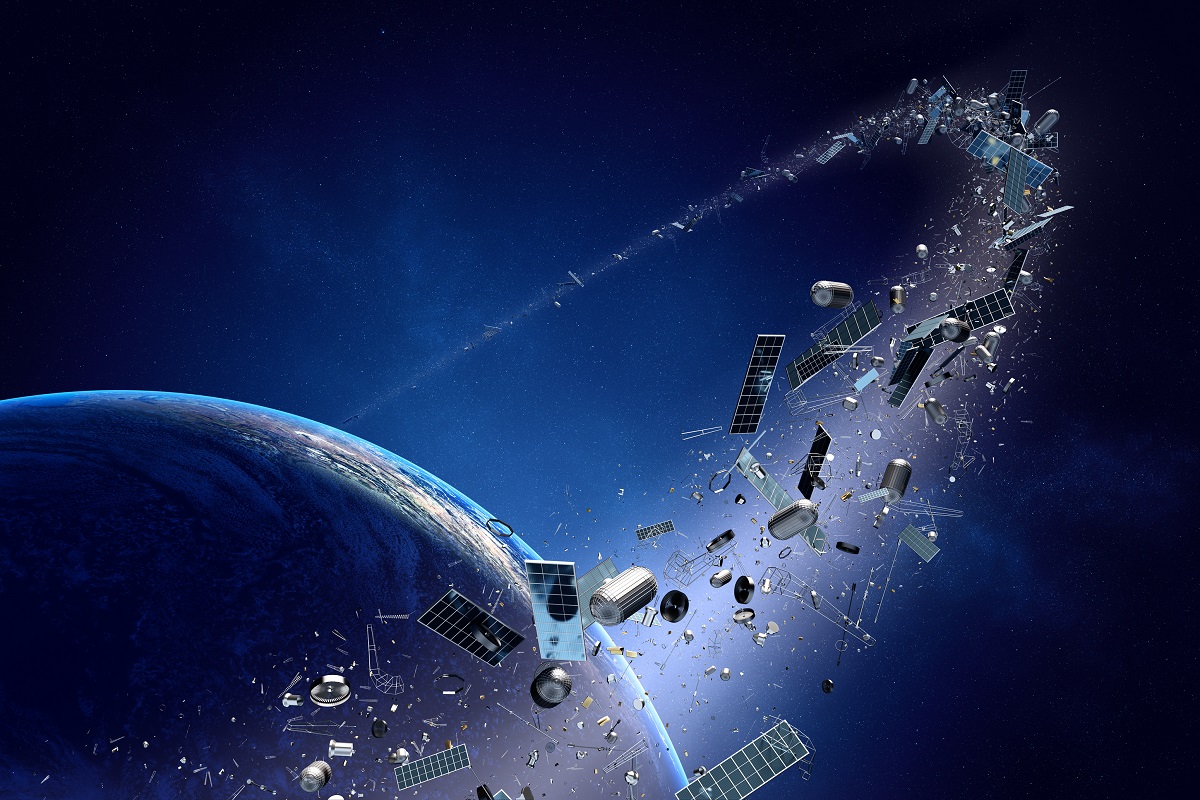Space is cluttered with satellites. Some 9,000 satellites are currently navigating overhead and their number could increase more than tenfold in the coming years. If man has been sending satellites for seven decades to predict the weather, help with navigation (GPS, Galileo) or measure the effects of global warming, the arrival over the past three years of megaconstellations dedicated to telecommunications is bringing about a real change in ‘ladder.
Starlink, owned by Elon Musk, has already formed a constellation of 5,000 satellites to provide its internet access service from space. Recently acquired by the French Eutelsat, OneWeb intends to catch up on this market while awaiting the imminent arrival of Kuiper from Amazon and possible Chinese competitors.
The low orbit positioning (approximately 550 km attitude) of this new generation of satellites offers reduced latency and speeds close to wired connectivity solutions. Unlike high-capacity geostationary (GEO) satellites, located at an attitude of 36,000 km, this approach requires the creation of megaconstellations of thousands or even tens of thousands of satellites – Starlink ultimately plans to deploy 42,000 units – to cover the entire surface of the globe.
Up to 100,000 satellites by 2030
“To stay in low orbit, these satellites must rotate very quickly, and it is essential to have a constellation of satellites to be sure that it is always possible to have access to one of them from a given point on the Earthexplains Philippe Baptiste, president of the president of the National Center for Space Studies (Cnes) to The gallery. Launches to low orbit are much easier and less expensive. »
As a result, according to the UN, the number of satellites in low orbit (LEO) could increase from 9,000 to 100,000 by 2030. This multiplication of satellites is not without its problems. Beyond the visual pollution of these luminous entities which disrupts astronomical observations, their density increases the risk of collision between satellites, leading to space flows or even fallout of this debris on Earth.

The exponential growth in the number of satellites above all raises the question of their environmental impact, in space but also on Earth. On November 20, at the Cité des Sciences et de l’Industrie, Ademe, Arcep and Cnes organized a day of discussion and reflection on the subject.
What are the risks of developing megaconstellations?
In one of the infographics which was distributed on this occasion, the three organizations take into account the other risks linked to megaconstellation development.

As for direct impacts, the very design of these satellites and their launch consume a lot of energy and fossil resources. These CO2 emissions contribute to the destruction of the ozone layer, soil acidification and, more generally, global warming.
Lack of international regulation
Their lifespan is, moreover, limited, of the order of five years in the case of Starlink. Which leads to their regular renewal. In two months, Starlink would have lost 212 satellites tells us Cybernews by technical failure or exposure to violent solar winds. Furthermore, the increase in the number of satellites in low orbit leads to an increase in frequencies and an increased risk of interference.
So many arguments that operators competing with Starlink and environmental associations had put forward before the Council of State to prohibit its access to the French market. In vain.
Also interviewed by The Tribunee, Laure de la Raudière, president of Arcep, would like to be able to compare the environmental impact of satellite internet access to that of an ADSL, optical fiber or mobile connection if the supervisory authority had the legal basis to collect this data from satellite operators, including Starlink.
The threat of non-allocation of frequencies
Failing this, the telecoms policeman could “ have legal means to decide not to allocate frequencies to an operator because the manufacture of the satellite or its launcher has too significant an environmental impact”, believes Laure de La Raudière.
In terms of regulation, France introduced the Space Operations Law (LOS) in 2008 in favor of “sustainable space” and which applies to all French satellite operators. This regulation defines in particular the requirements in terms of anti-collision in orbit and withdrawal of service at the end of the operational mission of the satellites. It remains to be extended to a European or even international level.
